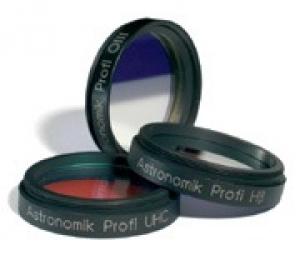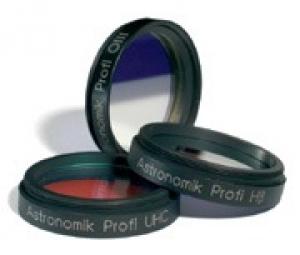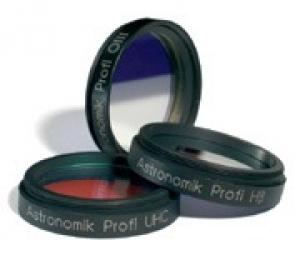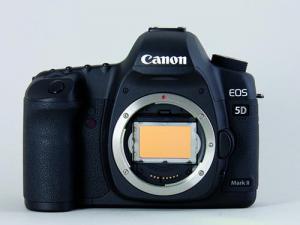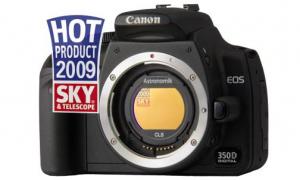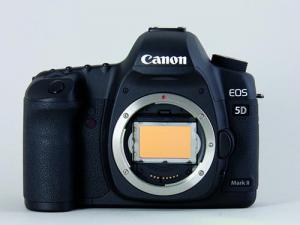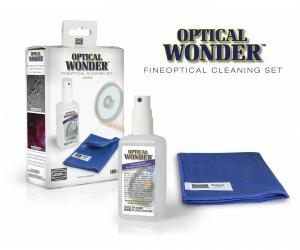- Telescopes
- Overview:
Telescopes - Achromatic Refractor
- Apochromatic Refractor
- Overview:
Apochromatic Refractor - ED Refractor - less color aberration than an achromatic
- SD APO - color free 2-element APO objective
- EDT APO - 3 element ED objective
- High End APO with 3-element APO objective - no color aberation
- Flatfield APO with flat field for Astrophotography
- All Apos and EDs from all manufacturers - large overview
- TS APO and ED from Japan with high quality optics
- Overview:
- Newtonian Telescopes
- Dobsonian Telescopes
- RC Ritchey Chretien Telescopes
- Casssegrain Telescopes
- Reflektor Telescopce with Lens Correcture
- Maksutov Cassegrain Telescopes
- GoTo Telescopes
- Solar Telescopes H-Alpha
- Overview:
- Mounts Tripods Rings Rails Power Supply ...
- Overview:
Mounts Tripods Rings Rails Power Supply ... - Mounts Equatorial with GoTo
- Mounts Equatorial without GoTo
- Mounts Azimutal with GoTo
- Mounts Azimutal without GoTo
- Mounts GoTo - Harmonic Drive
- Travel mounts for astro imaging
- Tripods Piers Polar Wedges
- Mount Control & Electronics
- Dovetail Clamps, Plates and Mount Adapters
- Tube Rings
- Power Supply
- Counterweights Balance Weights
- Mount Accessories - Other
- Overview:
- Telescope Accessories
- Overview:
Telescope Accessories - Eyepieces
- Barlows & Reducer Lenses
- Diagonal Mirrors and Prisms
- Binocular Viewers
- Finder Scopes
- Telescope Collimation and Test
- Cleaning Tools
- Transport and Storage
- Dust protection for Telescopes & Accessories
- Stray Light Protection
- Dewcaps and Heater
- Focusers, Adapters, Motorfocus
- Telescope DIY & Improvement
- Other telescope accessories
- Replacement Parts
- Overview:
- Filters
- Overview:
Filters - Color Filters and Color Filtersets
- Nebular Filters for Visual Observing
- Neutral-Density and Polfilter
- Photo Narrowband Nebular Filters
- Photo Broadband Filters
- Photo Planetary Filters
- Photo R-G-B and IR Cut Filters
- Photo - Filtersets
- Photometric Filters
- Clip Filter for DSLR Cameras
- Filter Wheels and Filterslider
- Solar Filters for white light
- Solarfilter for H-Alpha and Calcium
- Overview:
- Adaptors
- Overview:
Adaptors - Adapter 1,25" and 24,5mm
- Adapter 2"
- Adapter T2 - M42x0.75
- Adapter M48x0,75
- Adapter M54
- Adapter SC
- Adapter M63
- Adapter M68
- Adapter to other Threads
- Adapter Extensions
- Adapter camera bayonet
- Adapter Objective Filterthread
- Adapter Quick Changing , Rotation
- Adapter Eyepiece Projection
- Adapters Tilting
- Overview:
- Astrophotography and Photography
- Overview:
Astrophotography and Photography - Cooled Cameras
- Cameras without Cooling
- Deep-Sky Cameras uncooled
- Set-Offers Camera, Filter, Wheels
- Acessories for Cameras
- Travel mounts for astro imaging
- Imaging Correctors for Telescopes
- Autoguiding Cameras & Sets
- Everything for Guiding
- Focusing aids - Bahtinov mascs
- Flat Field foils and boxes
- Lenses for Cameras
- Piggyback Camera Holder
- Camera Bags, Photocases & more
- Digital Camera and Smartphone Adapter
- Other photo accessories
- Overview:
- Binoculars, Spotting Scopes, Microscopes, Range Finders
- Overview:
Binoculars, Spotting Scopes, Microscopes, Range Finders - Roof Prism Binoculars
- Binoculars with Porro prisms
- Binoculars from 100mm Aperture
- Binoculars with 1,25 inch eyepieces
- TSMX APO Binoculars
- Binoculars for Astronomy
- Binoculars Hiking Bird watching
- Monoculars - Opera Binoculars
- Accessories for Binoculars
- Spotting Scopes
- Range Finders
- Microscopy
- Bags for Phototripods & Binoculars
- Overview:
- Phototripods and Binomounts
- Books, Software
- Overview:
Books, Software - Books for Astronomy Beginners
- Star Charts and Planispheres
- Books about our Solar System
- Observing Tips for Amateurs
- Popular Astronomy Literature
- Teaching material
- Astrophotography books
- Telescopes, Observatories, Construction
- Calendars Yearbooks
- Software, Star Charts
- Books for Microscopers
- Books Nature and Animals
- Nature Photography TimeLapse
- Overview:
- Night Vision, Magnifiers, Weather, Domes & more
- Beginner Astronomy and Gift Ideas
- Second Hand & Special Offers
- New products
Manufacturer: Astronomik Filter
Product number: 8h00k9
EUR139.00new
EUR 139,00
incl. 19 % VAT (DE)
The VAT indicated refers to that applicable in Germany. After logging in, the VAT amount is adjusted to the applicable VAT of the stored delivery country. Therefore, the final price may vary accordingly.
excl. 6.95 € shipping costs (DE)
more details to the shipping costs ...Please log in to calculate shipping costs to your country.
rating: 5.0 of 5Astronomik ASIRBP6422 - ProPlanet 642 IR Band Pass Filter, 2", Planetary Filter1
- Details..
- Technical data..
- In the box..
The Astronomik ProPlanet 642 BP is the lastest addition to the family of Astromik ProPlanet IR-pass filters. The filter thrills because of its wide range of applikations for daylight IR photography, high-resolution lunar and planetary imaging and for taking beautifull and deep images of H-alpha regions when used for astrophotography.
"BP" are short for "Bandpass": The filter gives you a 200 nm spectral window from 642 nm to 842 nm. Contrary to the other two ProPlanet filters it blocks the longer infrared. Together with the Astronomik ProPlanet 742 and the ProPlanet 807, you can now have three choices to match your needs when imaging in the IR. The Astronomik ProPlanet 642 BP will be the right choice for the best image quite often!
With the Astronomik ProPlanet 642 BP, you get three filters in one product: depending on the camera, it is a fine tool for daylight IR photography with a digital camer, reduces seeing and enhances contrasts in high-reslution planetary and lunar imaging and is a economically-priced H-alpha filter for the start into deep-sky astrophotography of H-alpha nebulae.
How it works:
The ProPlanet IR 642 reduces dusturbing atmospheric affects when creating monochrome planetary and lunar videos. This is achieved through a transmission window where the wavelangth range has to fullfill a couple of requirements: the unsharpness which is caused by vertical motion of air in the atmosphere (seeing) are minimized the camera sensitivity is used best the wavelength range is tuned to the resolution and correction of the telescope.
The filter is designed for (astronomical webcams without built-in IR blocking filter or MC-modified DSLR cameras with video function. The wavelength range which passes the filter is a mixture of seep red and short wave infrared. Thus the filter is usable for colour imaging with the Astronomik L-RGB filter set for replacing the L filter under bad seeing, so that clearly sharper and less deformed images can be achieved. This enhances the usability of the images in postprocessing considerably. By including the H-alpha and [[S II] lines, it is a wide-band, but economically priced alternative to pure line filters of those wavelengths.
The focal range for getting optimal results can be found between f/1 and f/30.
Deep-sky astrophotography:
At the well-known H-alpha emission line, the ProPlanet 642 BP reaches its mmaximal transmission of almost 100%. Whereas all photons of the beautiful H-alpha regions hit the sensor, shorter wavelengths with the bulk of the light pollution are blocked. If using an astronomically modified camera, the bandwidth is reduced to 40 nm. The result is an enormous gain in contrast due to a darker sky background.
Daylight IR imaging:
One initial point when develloping the ProPlanet 642 BP was daylight imaging with (modified) digital cameras.
For normal photography, an IR blocking filter is mounted directly in front of the sensor in the camera, as the sensors are sensitive up to more than 1100 nm. By removing this built-in filter, a camera can be used for the very interesting IR photography.
The Astronomik ProPlanet 642 BP starts transmittion in the deep-red spectral range and lets pass all light up to 842 nm. Thus you get images perfectly suitable for channel selection and allows for an outstanding color separation in postprocessing, as the starting wavelength of 642 nm, combined with blocking long-wavelength delivers especially constrasty images.
Other uses:
The Planet IR 642 Pro BP is suitable exclusively for cameras without IR blocking filter.
Especially with colour cameras without IR blocking filters, it is the best to take monochrome images, as the Beyer matrix is not defined in IR and the camera gets "color-blind". The Astronomik Planet IR 642 Pro BP is not suitable for solar observation or photography, even if used with a sun filter.
Alternatives:
For luminance exposures (monochrome cameras) or colour imaging in the visual range, we recommend the Astronomik L filter. For pure IR exposures, we recommend the Astronomik ProPlanet 742 IR pass-filter or Astronomik ProPlanet 807 IR pass filter.
If the seeing is not so bad or if the telescope is smaller than 10" (250 mm), we recommend the use of the Astronomik ProPlanet IR 742.
If the seeing is very bad and the instrument is 10" (250 mm) or larger, the Astronomik ProPlanet IR 807 may be the better choice.
Suitability: Visual observation (dark skies): Unsuitable, the eye is insensitive at this spectrum Visual observation (urban skies): Unsuitable, the eye is insensitive at this spectrum Film photography: It depends on the film CCD and CMOS photography: Neutral, can be used as an inexpensive H-alpha filter DSLR photography (original): almost unusable DSLR photography (astro modified): economically priced alternative to H-alpha filters DSLR photography (MC modified): Very good, for IR daylight photography Webcam / Video (Planets): luminance exposures at higher seeing Webcam / Video (Deep Sky): experimental
Technical Data: more then 95% transmission for wavelengths of 642 nm to 840 nm blocking of wavelengths between 350 nm and 630 nm Parfocal with other Astronomik filters Glass thickness: 1 mm Completely resistant against high humidity, scratches and aging effects Diffraction limited, the filter will not reduce the optical performance of your telescope! Astronomik filters are delivered in a high-quality, long lasting, filter box
"BP" are short for "Bandpass": The filter gives you a 200 nm spectral window from 642 nm to 842 nm. Contrary to the other two ProPlanet filters it blocks the longer infrared. Together with the Astronomik ProPlanet 742 and the ProPlanet 807, you can now have three choices to match your needs when imaging in the IR. The Astronomik ProPlanet 642 BP will be the right choice for the best image quite often!
With the Astronomik ProPlanet 642 BP, you get three filters in one product: depending on the camera, it is a fine tool for daylight IR photography with a digital camer, reduces seeing and enhances contrasts in high-reslution planetary and lunar imaging and is a economically-priced H-alpha filter for the start into deep-sky astrophotography of H-alpha nebulae.
How it works:
The ProPlanet IR 642 reduces dusturbing atmospheric affects when creating monochrome planetary and lunar videos. This is achieved through a transmission window where the wavelangth range has to fullfill a couple of requirements:
The filter is designed for (astronomical webcams without built-in IR blocking filter or MC-modified DSLR cameras with video function. The wavelength range which passes the filter is a mixture of seep red and short wave infrared. Thus the filter is usable for colour imaging with the Astronomik L-RGB filter set for replacing the L filter under bad seeing, so that clearly sharper and less deformed images can be achieved. This enhances the usability of the images in postprocessing considerably. By including the H-alpha and [[S II] lines, it is a wide-band, but economically priced alternative to pure line filters of those wavelengths.
The focal range for getting optimal results can be found between f/1 and f/30.
Deep-sky astrophotography:
At the well-known H-alpha emission line, the ProPlanet 642 BP reaches its mmaximal transmission of almost 100%. Whereas all photons of the beautiful H-alpha regions hit the sensor, shorter wavelengths with the bulk of the light pollution are blocked. If using an astronomically modified camera, the bandwidth is reduced to 40 nm. The result is an enormous gain in contrast due to a darker sky background.
Daylight IR imaging:
One initial point when develloping the ProPlanet 642 BP was daylight imaging with (modified) digital cameras.
For normal photography, an IR blocking filter is mounted directly in front of the sensor in the camera, as the sensors are sensitive up to more than 1100 nm. By removing this built-in filter, a camera can be used for the very interesting IR photography.
The Astronomik ProPlanet 642 BP starts transmittion in the deep-red spectral range and lets pass all light up to 842 nm. Thus you get images perfectly suitable for channel selection and allows for an outstanding color separation in postprocessing, as the starting wavelength of 642 nm, combined with blocking long-wavelength delivers especially constrasty images.
Other uses:
The Planet IR 642 Pro BP is suitable exclusively for cameras without IR blocking filter.
Especially with colour cameras without IR blocking filters, it is the best to take monochrome images, as the Beyer matrix is not defined in IR and the camera gets "color-blind". The Astronomik Planet IR 642 Pro BP is not suitable for solar observation or photography, even if used with a sun filter.
Alternatives:
For luminance exposures (monochrome cameras) or colour imaging in the visual range, we recommend the Astronomik L filter. For pure IR exposures, we recommend the Astronomik ProPlanet 742 IR pass-filter or Astronomik ProPlanet 807 IR pass filter.
If the seeing is not so bad or if the telescope is smaller than 10" (250 mm), we recommend the use of the Astronomik ProPlanet IR 742.
If the seeing is very bad and the instrument is 10" (250 mm) or larger, the Astronomik ProPlanet IR 807 may be the better choice.
Suitability:
Technical Data:
| Transmission between 642 nm and 842 nm: | more then 95% |
| Line Transmission: | more than 90 % at H-Alpha, S[II] and N[II] |
| Blocking: | wavelengths between 350 nm and 630 nm |
| Carrier material: | optically polished substrate |
| Glass thickness: | 1 mm |
| Parfocal: | With all other Astronomik filters |
| Anti-reflective coating: | No moisture-sensitivity, no aging, and totally scratch-proof |
| Cell: | aluminium |
Recommended accessories
Alternatives to this product - Suggestions from TS
Cleaning & Collimating
Reviews
Written by Hartmut Colberg
on 2023-09-30
"Was ich bis jetzt testen konnte hält er was versprochen wird "
Written by Peter Waldeck
on 2022-09-28
"Wetterbedingt konnte ich den Artikel noch nicht ausgiebig testen."
Written by Pascal JACQUEMIN
on 2016-12-17
"It´s very good ..."








